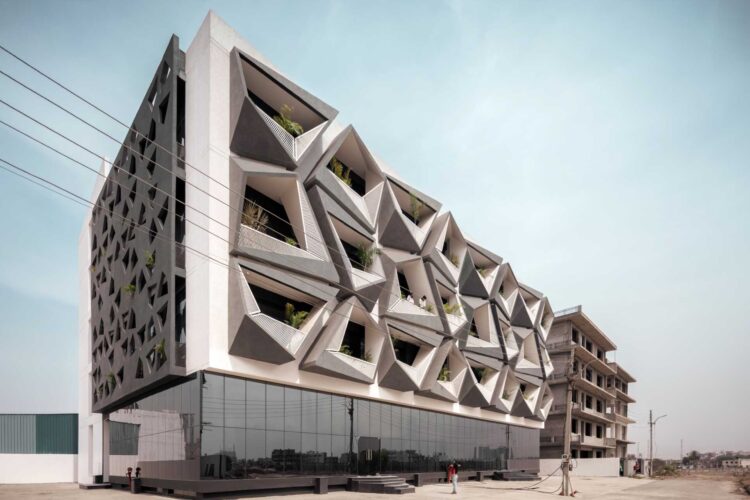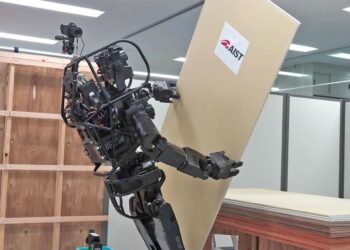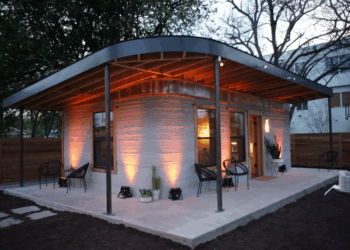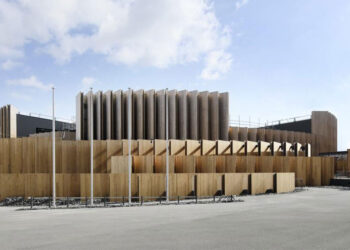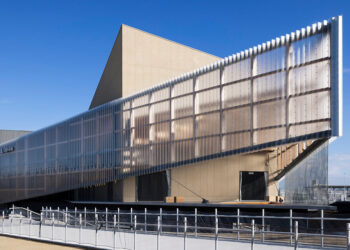For centuries, the architectural process has been a testament to human creativity, a careful balance of art and science guided by the visionary hand of a master designer. From the Parthenon to the Burj Khalifa, our skylines have been shaped by human intuition, experience, and painstaking manual effort. But today, a new architect is entering the studio—one that doesn’t sketch on paper or build physical models, but thinks in algorithms, learns from data, and generates thousands of designs in the time it takes to brew a cup of coffee. This new architect is Artificial Intelligence (AI), and it is fundamentally reshaping the very foundations of how we design and construct our world.
The integration of AI into architecture is not a distant futuristic concept; it is happening now. It’s a quiet revolution moving from the research labs of universities into the bustling offices of the world’s leading design firms. AI is being leveraged to create buildings that are not only more aesthetically daring but also stronger, more sustainable, and more efficient to build than ever before. It’s a tool that augments, rather than replaces, human creativity, freeing architects from tedious calculations and repetitive tasks to focus on the bigger picture: creating spaces that truly serve humanity.
This comprehensive exploration will delve into the heart of this technological transformation. We will uncover the core AI technologies driving this change, from generative design to digital twins, and examine their profound impact on every stage of a building’s lifecycle. We will showcase how AI is tackling the industry’s biggest challenges—from sustainability to budget overruns—and discuss the evolving role of the human architect in an increasingly automated world. This is the story of how algorithms are helping to build the cities of tomorrow.
The Blueprint for Change: AI’s Core Technologies
The term “AI” can feel abstract, but in architecture, its application is concrete and targeted. Several key technologies form the pillars of this new design paradigm, each offering a unique set of capabilities that extend beyond the limits of traditional methods.
A. Generative Design: The Evolutionary Architect
Perhaps the most revolutionary AI tool is generative design. Instead of a human designer drawing a specific solution, they act as a guide, defining the problem for the AI. The architect inputs a set of goals and constraints for a project. These can include:
- Goals: Maximize natural light, minimize material usage, optimize structural integrity, reduce energy consumption.
- Constraints: Budget limits, material types (e.g., timber, steel), manufacturing methods, site boundaries, building codes.
With these parameters set, the AI algorithm explores the entire universe of possible design solutions. Using processes that mimic natural evolution, it generates thousands—or even millions—of design iterations. Each option is a valid solution that meets the core requirements. The AI then analyzes and ranks these designs based on how well they achieve the specified goals. The result is often a portfolio of innovative, high-performance, and frequently unexpected designs that a human would likely never conceive of. Many of these designs feature organic, lightweight, and incredibly efficient structures inspired by forms found in nature.
B. Building Information Modeling (BIM) on Steroids
Building Information Modeling (BIM) is already a staple in modern architecture. It involves creating intelligent 3D models that contain deep layers of information about a building’s physical and functional characteristics. AI takes BIM to an entirely new level. By integrating machine learning algorithms with BIM models, firms can:
- Automate Clash Detection: In complex projects, it’s common for different systems—like plumbing, electrical, and HVAC—to conflict or “clash” in the design. AI-powered BIM can automatically scan the entire model to identify and flag these clashes in real-time, saving countless hours and preventing costly rework during construction.
- Optimize Layouts and Pathways: AI can analyze how people will move through a building and automatically optimize floor plans for better traffic flow, emergency egress, or space utilization. In a hospital, it might optimize the layout to reduce nurses’ walking distances. In an office, it could configure the space to maximize collaborative areas.
- Perform Predictive Analysis: By simulating factors like energy use, sunlight exposure, and acoustic performance within the BIM model, AI can predict how a building will perform long before a single brick is laid. This allows architects to make data-driven decisions to improve the building’s long-term efficiency and comfort.
C. Digital Twins: The Living Blueprint
A digital twin is a dynamic, virtual replica of a physical building that is continuously updated with real-world data from sensors. Think of it as a living, breathing BIM model. After a building is constructed, sensors monitoring everything from energy consumption and temperature to occupancy levels and structural stress feed data back to the digital twin. AI and machine learning algorithms analyze this constant stream of information to:
- Enable Predictive Maintenance: The AI can detect anomalies in a building’s performance—like an HVAC system using more energy than expected—and predict potential equipment failures before they happen. This allows for proactive maintenance, reducing downtime and operational costs.
- Optimize Real-Time Performance: The digital twin can simulate changes and recommend adjustments to improve the building’s efficiency on the fly. For instance, it might suggest adjusting the building’s lighting and climate control systems based on real-time weather data and occupancy patterns.
- Inform Future Designs: The vast amount of performance data collected from digital twins provides an invaluable feedback loop for architects. By analyzing how their completed buildings actually perform in the real world, they can use these insights to create even better, more efficient designs in the future.
Building a Better World: The Tangible Benefits of AI

The adoption of AI in architecture is not merely an academic exercise; it delivers powerful, real-world benefits that address some of the most pressing challenges in the construction industry and society at large.
A. Championing Sustainability and Green Design
The building and construction sector is one of the world’s largest consumers of energy and resources. AI provides a suite of powerful tools to drastically reduce this environmental footprint.
- Material Optimization: Generative design algorithms are programmed to create structures that use the absolute minimum amount of material necessary to achieve the required strength and performance. This not only reduces the upfront carbon cost of materials but also lowers the building’s overall weight and the resources needed for its foundation.
- Energy Efficiency Simulation: AI can rapidly simulate thousands of variables—from window placement and shading strategies to building orientation and insulation materials—to find the optimal combination for minimizing energy consumption for heating, cooling, and lighting.
- Lifecycle Analysis: AI can analyze the entire environmental impact of a building, from the sourcing of its raw materials to its eventual demolition and recycling, helping architects make more sustainable choices at every stage.
B. Enhancing Efficiency and Reducing Costs
Construction projects are notoriously prone to delays and budget overruns. AI brings a new level of predictability and efficiency to the process.
- Accelerated Design Phase: Generative design and automated layout tools can compress weeks or even months of early-stage design exploration into a matter of days.
- Error Reduction: By automatically detecting clashes and analyzing constructability within the design phase, AI helps prevent the costly errors and on-site changes that plague traditional projects.
- Optimized Construction Planning: AI algorithms can analyze a project design and generate the most efficient construction schedule, optimizing the sequence of tasks and allocation of resources to save time and money.
C. Unleashing a New Wave of Creativity
A common fear is that AI will stifle creativity, leading to homogenous, computer-generated designs. In reality, the opposite is proving to be true. By automating the technical and repetitive aspects of design, AI frees architects to focus on the more human-centric elements of their craft—strategy, aesthetics, and user experience. Generative design, in particular, serves as an inexhaustible source of inspiration, presenting architects with novel forms and solutions that push the boundaries of what they thought was possible, leading to a new era of architectural innovation.
The Architect’s Evolving Role: Co-pilot, Not Competitor
The rise of AI does not signal the end of the architect. Instead, it heralds a profound evolution of the profession. The architect of the future will be less of a drafter and more of a conductor, orchestrating a suite of powerful digital tools.
Their role will shift from creating specific forms to defining the right problems for the AI to solve. The most valuable skills will no longer be proficiency in drawing software, but rather the ability to think critically, define clear goals, and curate the best outcomes from the options the AI generates. The architect’s unique human expertise—in understanding culture, context, client needs, and the poetic quality of space—becomes more important than ever. They are the essential bridge between the client’s vision and the AI’s computational power, ensuring that the final output is not just efficient, but also beautiful, functional, and meaningful.
Constructing the Future, One Algorithm at a Time
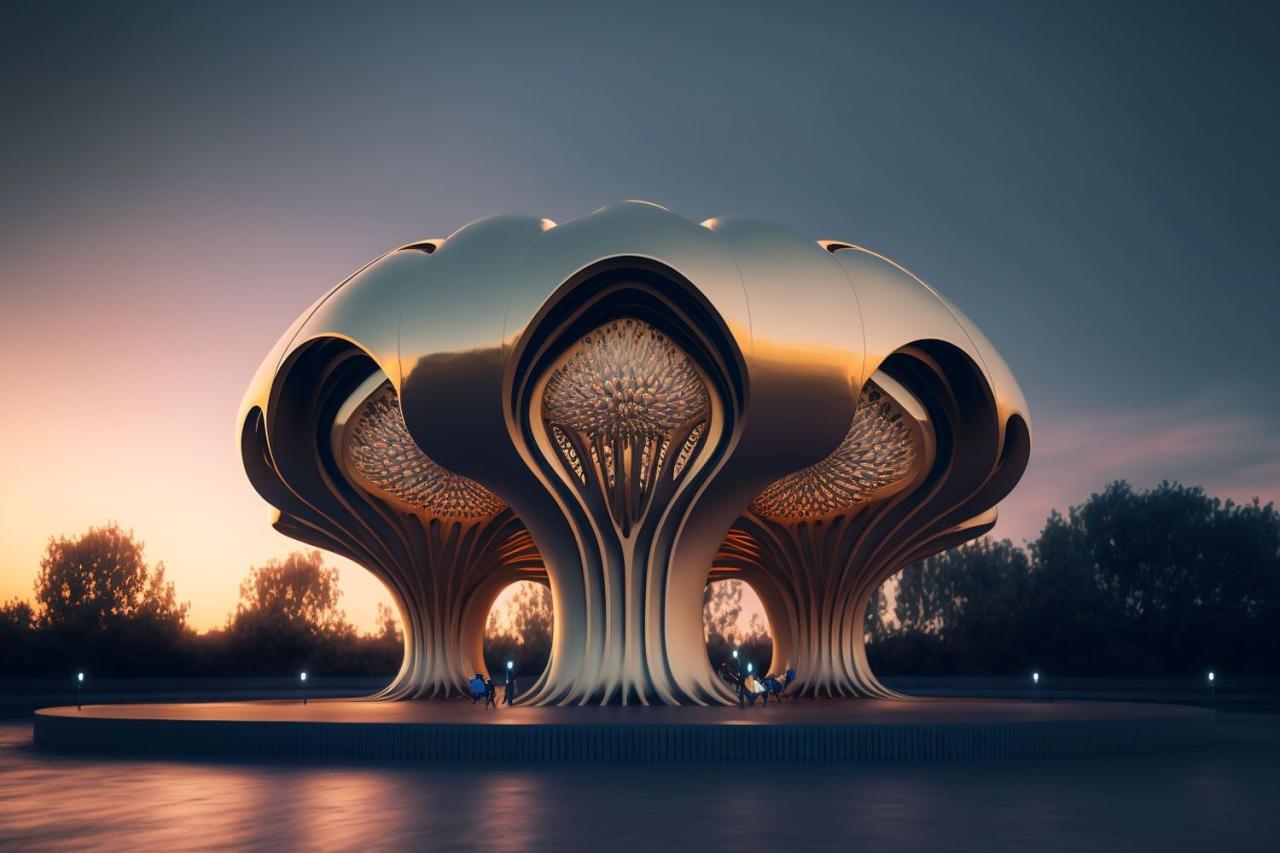
Artificial intelligence is fundamentally rewriting the rules of architecture and construction. It is empowering designers to create buildings that are more sustainable, efficient, and imaginative than we ever thought possible. From generating thousands of optimized design options in an instant to managing the real-time performance of a completed skyscraper, AI is providing the tools to solve age-old problems with unprecedented speed and intelligence.
This is not a future where humans are obsolete, but one where they are augmented. The architect remains the visionary, the master creator, but they are now equipped with a co-pilot that can navigate the infinite complexities of modern design with unparalleled analytical power. The fusion of human creativity and machine intelligence is the blueprint for the next generation of our built environment—a future where our cities are not just smarter, but also wiser, greener, and more attuned to the people who inhabit them.

